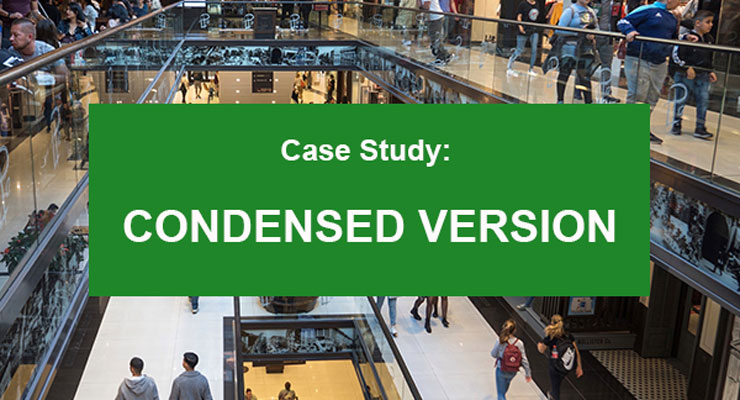Within the framework of the case study, the application possibilities of the innovative evAI analysis method are to be implemented and presented as a new standard. In May 2023, an existing location near the city center of Munich was examined, with population density in the vicinity and the designated purchasing power being crucial criteria in the site selection.
The surveyed shopping center is designed and positioned as a hybrid neighborhood center with a high proportion of local supply and regional market participants. Attractive tenants for local supply and strong brands are intended to generate foot traffic from an extended catchment area beyond the studied neighborhood. Large companies in the vicinity contribute to additional foot traffic for gastronomy. The shopping center was opened before the pandemic ,and therefore a consistent market introduction and establishment was interrupted and substantially impacted by pandemic-related health measures. The lingering effects of the pandemic and changes in shopping behavior have affected the attractiveness and foot traffic of the shopping center.
KEY LEARNINGS – CONCLUSION & ACTION AREAS
Location: What is the right concept for the existing location?
- To remain a Neighborhood Center with a “Mixed-use Concept”
- Diversified, smart, inclusive, and sustainability-oriented offerings tailored to the lifestyles and affinities of identified communities in the vicinity.
- Parking facility with integrated service offerings as a key asset of the center
- Optimization of visibility and individual traffic management systems within the catchment area
Positioning: What is the optimal orientation for the shopping center?
- The positioning as a “hybrid shopping center” is fundamentally confirmed by the examination.
- The foundation for future success lies in the consistent adaptation to the identified lifestyles of the relevant communities in the catchment area.
- Identified affinities to existing anchor tenants demonstrate potential synergies with other brands (perfect brand match) with which an attractive and suitable offering portfolio can be developed.
Target audiences: Which customer segment is the most relevant, and how can it be reached most effectively?
- Identification of an anchor tenant that generates foot traffic and attractiveness in the catchment area and exhibits disproportionately high affinities to the identified lifestyles.
- Presentation of potential opportunities beyond the existing catchment area based on clearly recognizable affinity brand worlds from different sectors.
- Identification of suitable brands as potential tenants and “no” matches.
Catchment Area: How can the catchment area be expanded, and how can the location become more visible and well-known?
- Tailored community map marking the potential catchment area based on identified communities.
- With supplementary mobility and traffic data, the visibility of the shopping center and traffic flows to the respective location can be customized and optimized.
Conclusion: With the evAI site analysis method and the insights gained from it, offer-oriented shopping centers are transformed into needs-oriented centers for communities.

COMPREHENSIVE SITE EVALUATION
For the evaluation of a Munich shopping center, the proprietary AI-supported analysis methodology of evAI Intelligence GmbH was applied in a task-specific and industry-specific manner. This case study exemplifies the extensive application spectrum of the innovative analysis method and highlights the difference from conventional location analyses.
For a detailed description of the applied methodology of the case study outlined above and further information please leave your contact information here:






